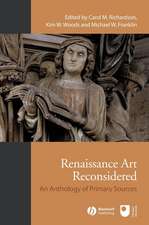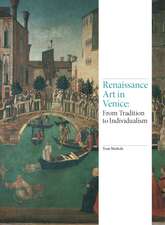Painterly Perspective and Piety: Religious Uses of the Vanishing Point, from the 15th to the 18th Century
Autor John F. Moffitten Limba Engleză Paperback – 31 mar 2008
Preț: 392.11 lei
Nou
Puncte Express: 588
Preț estimativ în valută:
75.05€ • 78.05$ • 62.80£
75.05€ • 78.05$ • 62.80£
Carte tipărită la comandă
Livrare economică 15-29 martie
Preluare comenzi: 021 569.72.76
Specificații
ISBN-13: 9780786435050
ISBN-10: 0786435054
Pagini: 312
Dimensiuni: 152 x 226 x 23 mm
Greutate: 0.43 kg
Editura: McFarland & Company
Colecția McFarland & Co Inc Pub
ISBN-10: 0786435054
Pagini: 312
Dimensiuni: 152 x 226 x 23 mm
Greutate: 0.43 kg
Editura: McFarland & Company
Colecția McFarland & Co Inc Pub










